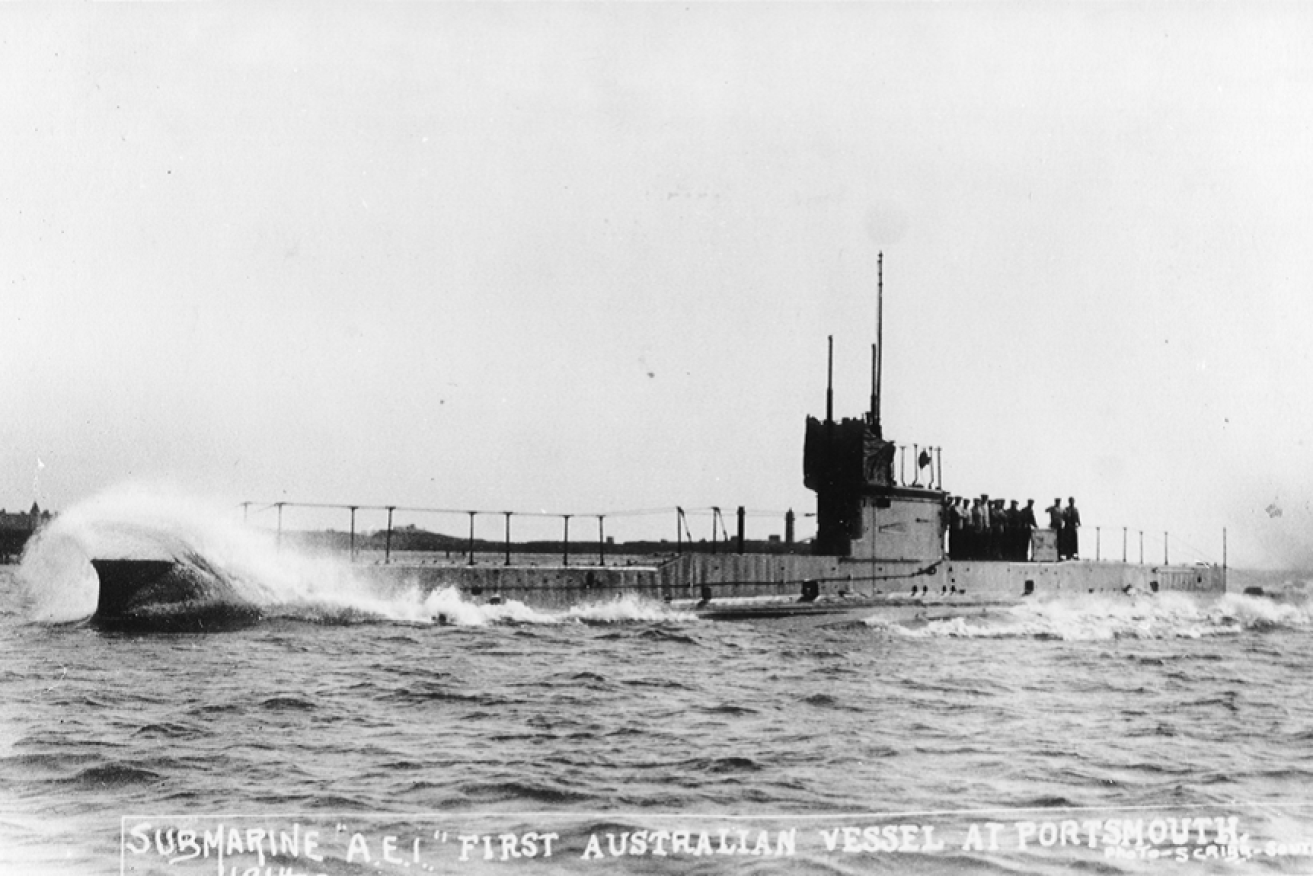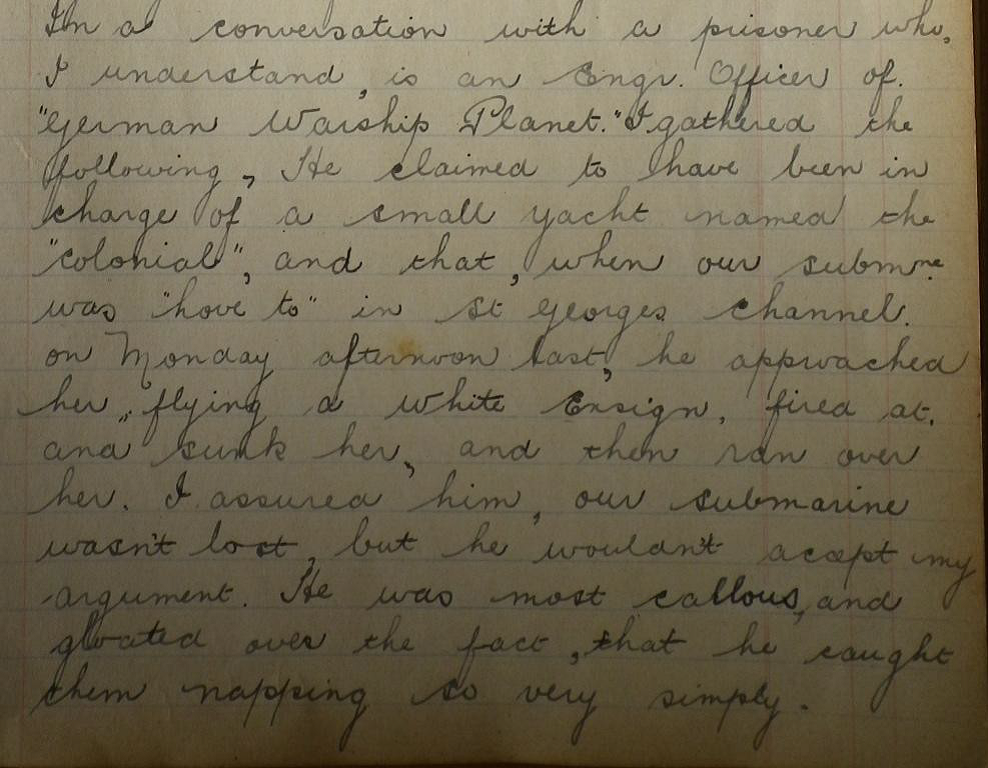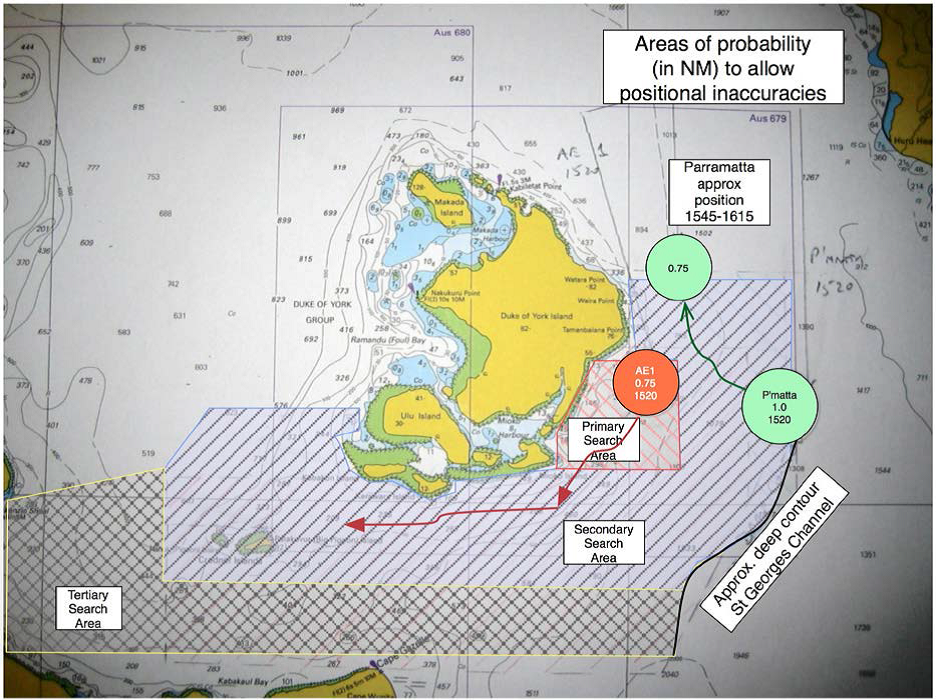Century old sub mystery “a timely reminder”
Australia’s first submarine disappeared 100 years ago this Sunday; its fate and the final moments of its three officers and 32 crew remain unknown.

HMAS AE1 leaves Portsmouth in 1914. Photo: Australian War Memorial
Naval historians are hoping the commemoration of the loss of AE1 will include a commitment by the Australian Government to use modern technology to confirm its suspected grave near Rabaul in Papua New Guinea.
An Australian Navy mine hunter is covering the area this week and has already confirmed “metal items of interest”; a more detailed (and expensive) sonar search is then needed to detect the shape of such objects.
The marking of the earliest days of Australia’s 100-year submarine history comes at a time of intense national debate on Australia’s future defence needs and the role of Australian industry in supplying those needs.
Defence think tank, the Submarine Institute of Australia (SIA), has been lobbying for a solution to the AE1 mystery and for continued subs capacity to defend Australia’s maritime interests.
“This is a timely reminder to people that we have a submarine capacity going back 100 years,” SIA executive director Steve Davies told InDaily.
“We were one of the first operating submarine nations.
“It was Prime Minister Alfred Deakin’s policy to have an Australian navy and he went to Britain in 1910 to put together our fleet capacity; three years later our first navy ships arrived in Sydney Harbour.”
Sunday’s memorial service at Garden Island naval base and at Rabaul will feature key speeches by the Defence Minister David Johnston and the Governor General Peter Cosgrove.
Submarine commanders and past and present crew will join them, hopeful that loss of AE1 isn’t forgotten.
The report “SubSunk”, prepared by the Submarine Institute of Australia, is the foundation for a search plan.
A later report estimated costs and made a formal proposal to the Australian Government to find AE1.
“It’s been a labour of love over many years,” report co-author retired submarine commander David Nicholls told InDaily.
“There were historical views of how it may have disappeared, but we wanted to put some detailed perspective on it.
“The reality is that there are 35 men down there; it’s a war grave,” said Nicholls, who commanded two RAN submarines.
“We’d like to bring closure for the descendants and historical closure for this part of Australia’s military history.”
The oldest mystery of Australian naval history began when the national government ordered two subs from the Vickers Maxim shipyards at Barrow-in-Furness.
These were British E class subs, their national designation marked by the prefix ‘A’.
AE1 and AE2 left Portsmouth in March 1914 and arrived in Sydney in May.
AE1, the nation’s first submarine, was commanded by English-born Lieutenant-Commander Thomas Besant; his crew was half Australian and half British.
Irishman Lieutenant Henry Stoker commanded AE2.
The two officers enjoyed celebrity status when they arrived in Sydney. Two months later, however, the social whirl stopped when World War I broke out.
AE1 and AE2 were immediately deployed to patrol northern waters near New Guinea.
A month later, AE1 was gone.
Historian Graham Seal’s AE1 – The Lost Submarine recalls the national mood.
“AE1’s disappearance caused an outpouring of public grief and commemorative activity.
“There were messages of sympathy from the King and Queen and from Winston Churchill in his role of First Lord of the Admiralty.
“The Royal Australian Navy produced a black-edged memorial booklet and special payments and arrangements were made for the wives and families of the officers and crew.
“It was a pre-radio and television age in which poetry was still an important form of public as well as private expression.”
Will Lawson even penned the poem “Missing”:
They heard no clamour of battle,
No charging squadron’s cheers;
No murderous Maxim’s rattle
Was dinned in their dying ears;
For wrapped in the ocean boundless
Where the tides are scarcely stirred
In deeps that are still and soundless,
They perished unseen, unheard.
O! brave are the heroes, dying
‘Mid thunder of the charge and gun;
But our half-mast flags are flying
For the crew of the AE1.
When naval historian Commander John Foster RAN delved into official records for his 2006 book, Entombed But Not Forgotten, he discovered that almost nothing had been done to solve the mystery since 1917.
His work was the catalyst for the later report by Nicholls and a number of volunteers who poured over wartime records, diaries, memoirs and local stories from Rabaul.
In the report’s conclusion principal author Rear Admiral Peter Briggs said; “We are of the view that AE1 was likely lost due to grounding on a navigational hazard in the Mioko Harbour region.
“From this analysis, we are able to recommend a search area that takes account of the likely grounding area, direction of drift as the submarine settled on the bottom and impact of the bottom topography on the final position. The primary area is about 5 Sq nautical miles of which 15-20 per cent is deeper than 300 metres.
“We note that, irrespective of whether the loss of AE1 was due to a navigational error as we conclude, or by enemy action – sunk by the KOLONIALGESELLSCHAFT, as we discount – there would be considerable overlap of the likely location of the loss, which adds weight to the recommended search areas.
“Finding the submarine may be the only way to solve the puzzle. We have searched diligently through the records and reminiscences, we assess that there are no undiscovered sources of truth as to what happened on that day – that all died with the crew of AE1.”
“It is time to marshal the technology and find AE1. Given the resources and this technology, we are confident that AE1 will be found in our search area.”
One of the more intriguing theories was that advanced by Signalman Aubrey Hodgson who was aboard the NZ supply ship SS Aorangi.
Hodgson records in his diary that he had an unsolicited conversation on board Aorangi in Rabaul Harbour with Petty Officer Reuschel, a German Navy member taken prisoner.
Reuschel claimed that he was in charge of the German colonial steamer, the Kolonialgesellschaft, and boasted that the ship had sunk AE1.
Here is Hodgson’s diary entry.

The research team, however, discounted the theory, due to other errors in Hodgson’s diary and the lack of any other witness statements to corroborate the German’s claims.
And so it is that 100 years after AE1 went down, the mystery remains.





